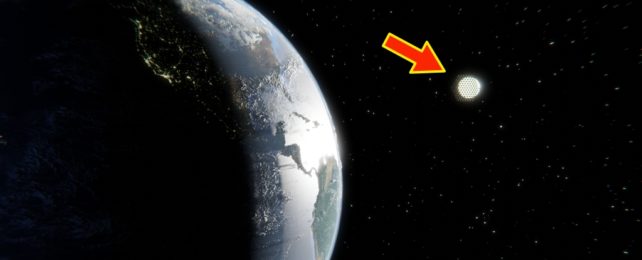Climate change is a real problem. Human-caused outputs of greenhouse gases like carbon dioxide and methane are the main driver of an unprecedented rise in global average temperatures at a speed never before seen in the Earth's geologic record.
The problem is so bad that any attempts to mitigate greenhouse gas emissions may be too little and too late. And so a team based at the Massachusetts Institute of Technology have proposed a radical new solution: bubbles… in space.
That's right, bubbles in space.
The thinking is based on two areas of concern. One is that try as we might to reduce or even eliminate greenhouse gas emissions moving into the future, the damage we've already done from over a century of advanced industrialization has already set the course of the Earth's climate trajectory in a bad direction.
It may be so bad that even if we were to completely stop all greenhouse gas emissions tomorrow, we would still have to live with the severe impacts of climate change for decades and even centuries to come, including continued rising sea levels, more extreme weather events, and disruptions to food-producing regions.
Another way to tackle the problem is to sequester or remove carbon, or somehow limit the amount of sunlight reaching the surface of the Earth, for example by releasing aerosols into the atmosphere.
The team at MIT argues that this is generally a bad idea because our climate system is so complex and dynamic that introducing artificial factors into the atmosphere itself cannot be reversed.
So that's why they're thinking space. The idea is to develop a raft of thin bubble-like membranes.
Those membranes will reflect or absorb a fraction of the sunlight reaching the Earth by literally blocking it. The team argues that if the amount of sunlight reaching the Earth is reduced by mere 1.5 percent, we could completely eliminate the effects of all of our greenhouse gas output.
Personally I'm pretty skeptical about this idea. For one, the team has yet to articulate exactly what these bubbles will be made out of and how they will be sent to the target location, which is near the first LaGrange point of the Earth-Sun system.
They will need to maintain stability of the raft by balancing the gravitational forces of the Earth, the Sun, and also likely the other planets. They will also have to contend with radiation pressure from the Sun itself, not to mention the constant rain of the solar wind and micrometeoroids.

To block even a percent of the Sun's output would require a raft thousands of miles wide, which would make it the largest structure we have ever put into space. So there's just a tiny bit of engineering challenge to make this thing work.
